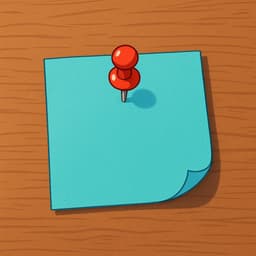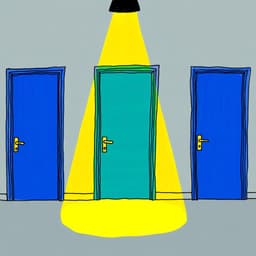What is the date today?
in Spanish¿Cuál es la fecha de hoy?
/kwahl ehs lah FEH-chah deh OY/
The most standard, textbook-correct way to ask for the date. It works in every Spanish-speaking country and in any social situation, from a business meeting to a casual chat.
💬Other Ways to Say It
¿Qué fecha es hoy?
/keh FEH-chah ehs OY/
A very common, slightly shorter alternative to the primary translation. While technically 'cuál' is grammatically preferred for choosing from a set (dates), 'qué' is widely accepted and used in Latin America.
¿A qué estamos hoy?
/ah keh ehs-TAH-mohs OY/
Literally translates to 'At what are we today?'. This is the most natural way to ask the date in Spain. It implies 'where are we positioned in the month/year?'
¿A cuántos estamos hoy?
/ah KWAN-tohs ehs-TAH-mohs OY/
Similar to '¿A qué estamos?', but specifically asks for the number (quantifier) of the day. Literally 'At how many are we today?'
¿Qué día es hoy?
/keh DEE-ah ehs OY/
This can mean 'What day of the week is it?' (Monday, Tuesday) OR 'What is the date?'. Context usually clarifies which one you mean.
¿Me dices la fecha, por favor?
/meh DEE-sehs lah FEH-chah por fah-VOR/
Literally 'Can you tell me the date, please?'. It turns the question into a polite request.
¿A cómo estamos hoy?
/ah KOH-moh ehs-TAH-mohs OY/
A regional variation of the 'estar' structure. Literally 'At how are we today?'
🔑Key Words
Key Words to learn:
📊Quick Comparison
Here is how to choose between the three most common ways to ask for the date.
| Phrase | Formality | Best For | Avoid When |
|---|---|---|---|
| ¿Cuál es la fecha? | Neutral/Formal | Any situation, especially travel or business | Never (it's always safe) |
| ¿A qué estamos? | Informal | Chatting with locals in Spain | In formal business settings in Latin America |
| ¿Qué día es hoy? | Neutral | Casual context | You specifically need the number, not the day of the week |
📈Difficulty Level
Generally easy, though 'fecha' requires a clean 'ch' sound and 'cuál' needs a quick 'kw' sound.
Simple structure, but remembering to use 'cuál' instead of 'qué' is the main hurdle.
Regional variations (Spain vs. LatAm) and the 'primero' rule for the 1st of the month add slight complexity.
Key Challenges:
- Remembering NOT to use ordinal numbers (second, third) for dates
- Using the Day/Month format correctly
💡Examples in Action
Disculpa, ¿cuál es la fecha de hoy? Necesito firmar este documento.
Excuse me, what is the date today? I need to sign this document.
Oye, ¿a qué estamos hoy? ¿Es el 15 o el 16?
Hey, what's the date today? Is it the 15th or 16th?
¿Qué fecha es hoy? ¡Es mi aniversario y lo olvidé!
What's today's date? It's my anniversary and I forgot!
Profesor, ¿qué día es hoy para ponerlo en el examen?
Teacher, what is the date today to put it on the exam?
🌍Cultural Context
The Day Comes First
In the Spanish-speaking world, dates are strictly written in the Day/Month/Year format (DD/MM/YYYY). If you see 05/02/2023, it is February 5th, not May 2nd. Mixing this up is a classic source of confusion for Americans traveling in Spain or Latin America.
The 'First' is Special
When saying the date, you use the ordinal number 'primero' for the 1st of the month (e.g., 'el primero de mayo'). However, for every other day, you use regular numbers (dos, tres, cuatro). You never say 'el tercero de mayo' (the third of May), just 'el tres de mayo'.
We Are 'In' the Date
In Spain and parts of Mexico, it's very common to speak about the date as a collective state of being using the verb 'estar' (to be). They say 'Estamos a 20 de abril' (We are at April 20th). It reflects a cultural view of time as something we are moving through together.
❌ Common Pitfalls
Asking '¿Qué es la fecha?'
Mistake: "Translating 'What is the date?' word-for-word as '¿Qué es la fecha?'"
Correction: ¿Cuál es la fecha?
Using Ordinal Numbers (Second, Third...)
Mistake: "Saying 'El quinto de mayo' for May 5th."
Correction: El cinco de mayo.
Capitalizing Months
Mistake: "Writing '2 de Enero'."
Correction: 2 de enero.
💡Pro Tips
Answering the Question
When someone asks you this, the standard formula to reply is: 'Hoy es [number] de [month]'. For example: 'Hoy es cinco de mayo'. You don't need to add the year unless specifically asked.
The 'De' Connector
Don't forget the little word 'de' between the day and the month. In English we say 'May 5th', but in Spanish it is always '5 OF May' (cinco DE mayo).
🗺️Regional Variations
Spain
Spaniards strongly prefer the 'estar' (to be) construction, treating the date as a location in time that 'we' are currently at. It implies collectivism.
Mexico & Latin America
In Mexico, you might hear '¿A cómo estamos?' which is similar to the Spain version but uses 'cómo' (how) instead of 'qué' (what). Generally, Latin America prefers the direct question about the date/day.
💬What Comes Next?
You ask for the date and they give you just the number
Es el veinticinco.
It's the 25th.
¿De qué mes?
Of which month?
You realize you missed a deadline
Hoy es lunes dos.
Today is Monday the 2nd.
¡Ay no! Pensé que era domingo.
Oh no! I thought it was Sunday.
🧠Memory Tricks
To remember 'CUÁL es la fecha' instead of 'QUÉ', think of asking for the 'Qual-ity' or specific identity of the day. You want to pick the specific date out of the calendar.
For the Spain variation 'Estamos a...', imagine you and your friend are standing on a giant calendar. You ask, 'At which (square) are we standing today?' -> '¿A qué estamos?'
🔄How It Differs from English
The biggest shock for English speakers is the word order (Day + Month vs Month + Day) and the lack of capitalization for months. Also, Spanish speakers rarely use the year in casual conversation about dates, whereas English speakers might add it more often.
False Friends & Common Confusions:
Why it's different: Directly translating to 'Qué es la fecha' asks for a definition of the concept of a 'date'.
Use instead: ¿Cuál es la fecha?
🎯Your Learning Path
➡️ Learn Next:
How to say the days of the week in Spanish
You'll need these to understand the answer when you ask '¿Qué día es hoy?'
How to say the months in Spanish
Essential for understanding full dates like '5 de mayo'.
How to say numbers in Spanish
You cannot understand the date if you don't know numbers 1 through 31.
✏️Test Your Knowledge
💡 Quick Quiz: What is the date today?
Question 1 of 3
You are in Madrid talking to a friend. What is the most natural way to ask the date?
Frequently Asked Questions
Is it wrong to say '¿Qué día es hoy?' to ask for the date?
It is not wrong, but it is ambiguous. It usually elicits the day of the week (e.g., 'It's Tuesday') rather than the calendar date (e.g., 'The 5th'). If you specifically need the number, '¿Cuál es la fecha?' is clearer.
Why do I hear people say 'el uno de mayo' instead of 'primero'?
You might hear 'el uno' from heritage speakers or in very casual slang, but 'el primero' is the standard, correct form across the entire Spanish-speaking world. Stick to 'primero' to sound natural.
Do I capitalize the months when writing the date?
No! Unlike in English, months (enero, febrero, marzo...) and days (lunes, martes...) are written in lowercase in Spanish, unless they appear at the very beginning of a sentence.
Can I just say '¿La fecha?' with a questioning tone?
Yes, in a very casual context or if you are filling out a form with someone, simply saying '¿La fecha?' is perfectly understood. It's short for '¿Cuál es la fecha?'.
📚Continue Learning Spanish Phrases
Explore More Phrases in These Categories
Find similar phrases to expand your Spanish vocabulary:
Want to Learn More Spanish Phrases?
Browse our complete collection of Spanish phrases organized by situation, from basic greetings to advanced conversations. Perfect for travelers, students, and anyone learning Spanish.
View All Spanish Phrases →


